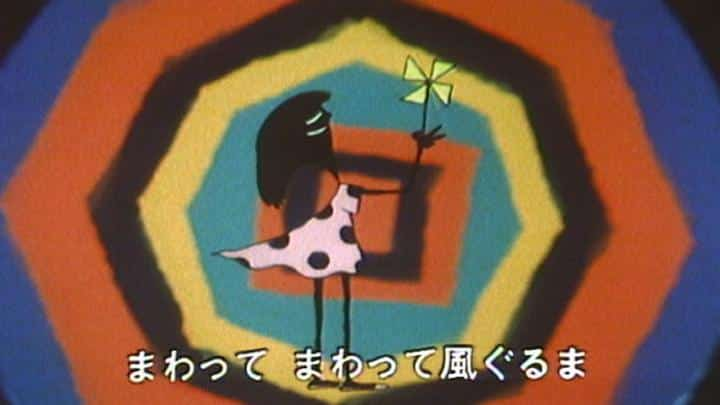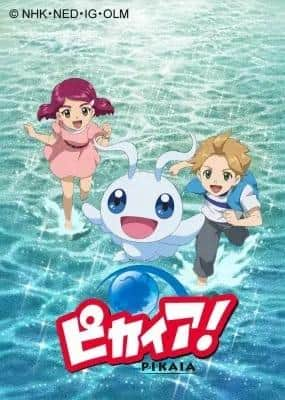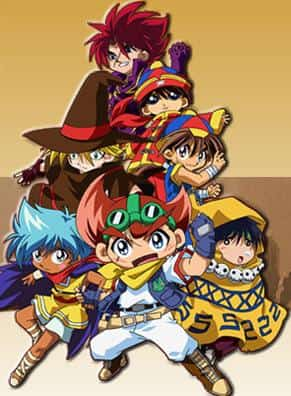"Kazeguruma": A thorough analysis of the charm and emotion of this song!

The appeal and reputation of the windmill"Kazeguruma," which aired on NHK Educational TV (now NHK E-Tele) in August 1984, is known as a work that deeply moves viewers in its short two-minute run. This anime was produced by Taku Furukawa and FLA FRA, and aired as part of NHK's "Minna no Uta" series. Below, we will take a closer look at the appeal and reputation of this work, as well as its background. Overview"Kazeguruma" is a one-episode short anime that was broadcast in August 1984. Although it was only two minutes long, the story told in that episode left a strong impression on viewers. It was produced by Taku Furukawa and FLA FRA, and the copyright belongs to NHK. storyThe story of "Windmill" is simple, with a windmill as the main character. The windmill spins in the wind, and through its movement it expresses the changing of the seasons and the beauty of nature. The story progresses without words, using only music and images. This maximizes the visual beauty and power of the music. Background"Kazeguruma" was produced as part of NHK's "Minna no Uta" series. "Minna no Uta" is a program that aims to convey messages through music to a wide range of audiences, from children to adults. "Kazeguruma" was produced as part of this series, with the theme of the beauty of nature and the changing of the seasons. Taku Furukawa, who was in charge of production, is known as a filmmaker, and FLA FRA is an animation production company. The collaboration between the two companies resulted in a work that combines beautiful images and music. musicThe music for "Windmill" skillfully incorporates the sounds of windmills and nature, further enhancing the visual beauty of the film. The music was composed by musician Yosuke Yamashita. Yosuke Yamashita is also known as a jazz pianist, and his unique sensibility is reflected in the music for this film. pictureThe visuals of "Windmill" depict the changing of the seasons and the beauty of nature, centering on the rotation of a windmill. The animation was hand-drawn, and its warmth and beauty deeply moved viewers. In particular, the scene in which the rotation of the windmill is depicted in tandem with the changing of the seasons has been praised as a masterpiece that combines visual beauty with poetic expression. Evaluation and impact"Kazeguruma" has been highly praised since it was first broadcast. In just two minutes, its expressiveness in depicting the beauty of nature and the changing of the seasons left a strong impression on viewers. It was also praised for its method of progressing the story without using words, and is known as a work that maximizes the visual beauty and power of music. This work is one of the most popular works in the NHK "Minna no Uta" series, and is still loved by many fans even more than 30 years after it was broadcast. In addition, Taku Furukawa's talent as a video artist and FLA FRA's technical skills were also highly praised, and it had a great influence on later animation production. Recommended points"Windwheel" is a beautiful animation that depicts the beauty of nature and the changing of the seasons. In just two minutes, the film maximizes the visual beauty and musical power, making it a recommended work for a wide range of viewers, from children to adults. In addition, Taku Furukawa's talent as a video artist and FLA FRA's technical skills are also highly praised, making this a work that is recommended for anyone interested in animation production. Related TitlesLike "Kazeguruma," there are many masterpieces in the NHK "Minna no Uta" series. Here are some recommended works.
summary"Kazeguruma" is known as a work that deeply moves viewers in its short two-minute run. It is recommended for a wide range of viewers, from children to adults, as a work that brings out the beauty of nature and the changing of the seasons, as well as the power of music to the fullest. In addition, Taku Furukawa's talent as a video artist and FLA FRA's technical skills are also highly praised, so this work is also recommended for those interested in animation production. It is one of the most popular works in NHK's "Minna no Uta" series, and is still loved by many fans more than 30 years after it was broadcast. |
<<: Chameleon: The appeal and reputation of Minna no Uta
>>: "Come to the Sea": A thorough analysis of the charm and emotion of this song
Recommend
Review and impressions of "The Prince of Tennis OVA National Tournament Semifinal"
Detailed review and recommendation of The Prince ...
The third round of extension of the key of the movie "Eight Hundred" has exceeded 3 billion in cumulative box office
The war-themed film "Eight Hundred", wh...
The appeal and evaluation of Black Clover Jump Festa version
The appeal and evaluation of Black Clover (Jump F...
Stephen King's horror novel 'The Dark Half' to be adapted into a movie
According to foreign media reports, Stephen King&...
"X-Men: New Mutants" female mutants took a group photo in the hotel, Arya showed her shoulders
The crew of "X-Men: Dark Phoenix" just ...
Netflix's The Witcher will focus more on Yennefer and Ciri
On November 1, Netflix officially announced that ...
The appeal and evaluation of Sports Kotanuki - Horse Racing: A must-watch anime for enjoying the world of horse racing
Sports tanuki horse racing edition - Sports tanuk...
"Kikujiro's Summer" is scheduled to be released in mainland China on September 10th. Kitano Takeshi's masterpiece is coming
According to media reports on August 24, the famo...
Aoyama-kun, the clean freak! - A thorough analysis! What is the appeal of Aoyama-kun, who exudes cleanliness?
"Clean Freak! Aoyama-kun": A comedy ani...
"CHAOS;CHILD" Review: A visual novel that combines science and mystery
CHAOS;CHILD - Chaos Child - Full-spectrum review ...
"Hellboy" new poster released, new character setting exposed for the first time
Today, David Harbour, the star of the reboot of &...
Tom Holland and Rey from Star Wars star in the new sci-fi film Chaos Walking, which is scheduled to be released in China on August 27
The sci-fi action film "Chaos Walking" ...
Japanese media selected the most anticipated new animated films in 2023, and "City Hunter" ranked second
2023 has just begun, and many new Japanese animat...
NEXON mobile game "Blue Files" announced that the game will launch TV animation
The official mobile game "Blue Archive"...
The original painting of the movie "I Want to Cry, I Put on a Cat Mask" was released and will be released on Netflix on June 18
The animated theatrical version of "I Want t...









